101 Ways To Save Money on Energy Bills
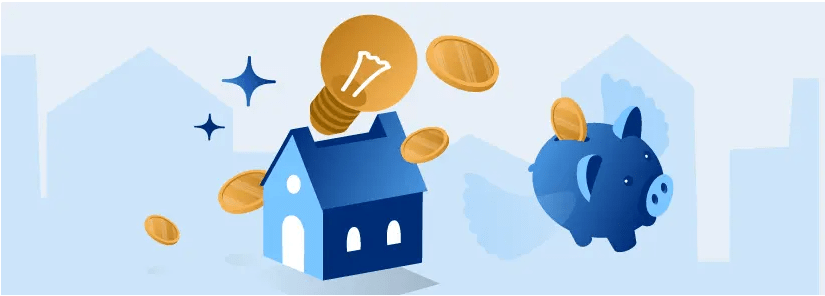
Energy bills make up a large portion of household expenses. Fortunately, there are various tactics you can implement to save on your energy consumption at home (besides just turning off the lights when you leave the room).
Looking to switch energy providers? Save 31% with Energia!
Our energy specialists can help you switch to a better energy plan in just a few minutes!
Looking to switch energy providers? Save 31% with our discount!
We're currently closed but please leave us your number and we'll give you a free callback as soon as we'open!
To help you start saving, we’ve compiled a list of 101 ways to save money by being more energy-efficient and cutting back on your costs. By applying even just a few of these simple (yet significant!) energy saving tips, you can still expect to see big savings on your gas and electricity bills.
Switch Your Energy Tariff
1. Switch Your Tariff Every 12 Months
The number one tip for saving money on your household utility bills is to change energy tariffs every 12 months. This can typically save you hundreds over the course of a year. You can do this also by switching energy providers as well!
Laundry hacks

2. Full Loads
Only put on a wash when you have a full load. Half-load or small-load functions still use much more water and electricity proportionally when compared with full-loads.
3. Front Load
The next time you're in the market for a new washing machine, remember that front-loading machines use at least 40% less water, and 30% electricity, than top-loading washing machines, a significant way to save money.
4. Wash with Cooler Water
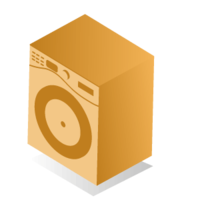
Washing machines aren’t connected to hot water, only cold, so the big energy expense from them is heating the water to wash your clothes in.
Almost 75% of the electricity used every time you put on a wash goes towards heating water. Modern clothes detergents are extremely effective so wash your clothes on a cool cycle at 30ºC (86ºF) to shave more money off your electricity bill. Washing with cooler water will also protect your garments’ colour for longer and prevent shrinkage (no more woollen jumpers that only fit toddlers).
5. Standby Mode
If your washing machine has a standby mode, unplug it when not in use, as it will still be drawing a small charge, a simple energy saving tip.
6. Dryers
Dryers are some of the worst energy guzzlers, as we all know. The best option is to hang your washing outside, but unfortunately Irish weather rarely permits that possibility. Drying your clothes inside on a clothes horse or a sheila maid (the drying racks at ceiling height that you lower to place clothes on) is another energy saving option for when inclement weather threatens.
7. Consecutive Loads
If you must use the dryer, try to do two consecutive loads in a row in order to take advantage of the residual heat from the previous load.
8. Faster Drying
If you have more than a single load of wet clothes, put similar items on to dry together. Synthetics will dry much faster than blankets and towels, for example. So instead of putting on two 120-minute loads, you could get away with one 60-minute load and one 120-minute load, saving 25% of the electricity that would have been consumed otherwise. Putting a dry towel in your dryer (if there is room) will also speed up drying time.
9. Lint
Make sure to regularly clean the lint collector in your dryer in order to keep it running efficiently.
10. Dry in the Evening
Put on your dryer in the evening when you are at home in order to take advantage of the heat it generates. There's little sense in putting it on in the morning before you leave, to heat your empty house, when it could be doing double-time in helping to heat your home when you need it most.
Kitchen Hacks
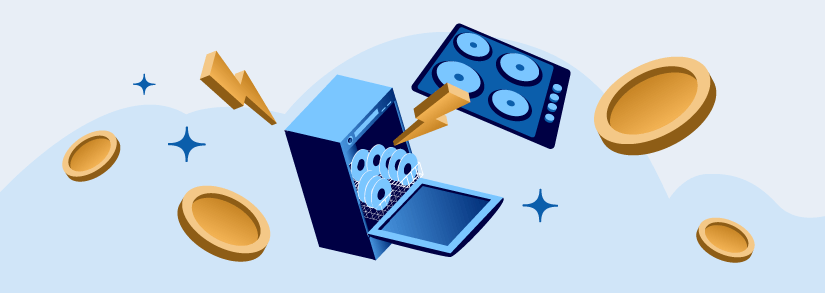
11. Evening Time
As with dryers, put your dishwasher and oven on in the evening when it’s cold outside, so the ambient energy they produce can help your heating system meet the temperature set on your thermostat. That way you can maximise energy efficiency and reduce costs by getting the electricity used up on cooking to do double duty in warming your house.
12. Checking Your Food
As tempting as it is, and we’ve all been guilty of doing this, don’t open the oven to check on your food. Instead switch on the oven light and look through the glass to see how everything is cooking. If you simply must check how your roast is coming along, quickly remove it, close the oven door, check it, and then quickly put it back in. The temperature in the oven can drop 65ºC (149ºF) if left open for just 30 seconds, and it takes several minutes to heat up again.
13. Toasty
Use a toaster oven instead of a full oven whenever possible. It makes no financial sense to literally burn money heating up a large oven if you only have one item to cook or reheat.
14. Batch Cooking
Batch cook when using the hob, and especially the oven. Not only will you be able to freeze extra portions (and thus filling your freezer and increasing its efficiency) and save on weekly electricity costs, you’ll also have a supply of homemade meals on hand.
15. Tea and Coffee

When boiling water for tea or coffee, whether on the hob or with an electric kettle, only boil as much water as you need - measure it out using a cup. Make sure that there is at least enough water in the kettle to cover the heating element in the kettle or you'll run the risk of damaging your kettle.
16. Reheating Food
Using your microwave for reheating food, rather than the oven, is much more energy efficient and can save you a significant amount of money on your energy bill.
17. Buying a New Oven
When shopping around for a new oven, pay a little bit more for a convection model. Modern convection ovens not only shorten cooking time and cook food more evenly, they can also save you up to 20% on oven-related energy costs.
18. Defrosting
Always defrost food fully before cooking in order to reduce cooking time.
19. Self-Cleaning Ovens
If your oven has a self-cleaning option that you just have to use, turn it on right after you’ve been using the oven for baking or roasting, in order to give it a head start and use the residual heat energy left over.
This only applies to gas ovens. Self cleaning options use a huge amount of energy and are wasteful. Instead, consider cleaning it the old fashioned way, with some elbow grease!
20. Baking Dishes
Glass and ceramic baking dishes are much more efficient at transferring heat than metal ones.
21.Clean Your Oven
Keeping your oven clean, as with your fridge and freezer, will help it run more efficiently by directing heat at your food rather than at the insulating layer of burnt food.
22. Seals on Appliances
Regularly check the seals on your fridge, freezer and oven. Gaping or broken seals will decrease the efficiency of your appliances, increasing the amount of energy needed to get them to a certain temperature.
23. Cool Your Food
Only put cooked food in the fridge or freezer once it has cooled down completely, otherwise it will raise the temperature inside your appliance. This in turn will mean that the fridge or freezer has to work harder to cool down. This means more electricity will be used, adding to the already heavy usage of your fridge and freezer. For example, depending on the age and energy efficiency of your fridge, it can account for between 8.33% to 33.33% of your yearly electricity bill.
24. Shorten Cooking Time
Covering your food with lids or tin foil in the oven will shorten cooking times, another simple way to save money.
25. Preheating the Oven
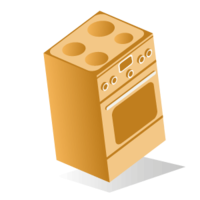
Unless you are baking a soufflé or lava cake or similar, where a precise cooking time is needed, preheating your oven is a waste of time and energy. A lot of us are also guilty of not timing the preheating phase or taking longer in the food preparation phase than we had estimated, leaving our hot and empty oven working merrily away.
There is also heat loss when we preheat the oven to a certain temperature and then open the door to place pans inside. Put your food in before you turn the oven on and although technically the cooking time may increase, you’ll see your energy bills should decrease.
26. Get the Most Out of Residual Heat
When you’ve finished using the oven and your heating is on, open the door fully and let out the heat. This way the energy that's been consumed can also help warm your house, instead of dissipating into the surrounding cupboards.
27. Items in Your Oven
Extra trays and racks in the oven that you are not using have mass, and will slow down the process of your oven heating up - although conversely they will also help it run more efficiently and cool down more slowly once the set temperature has been reached.
For food items which require short cooking times, remove any extra oven accoutrements to save a few minutes on the time taken to heat up the oven.
28. Warm Up Your House
As with tip number 26, opening the kitchen door while cooking will share the extra heat generated with the rest of the house.
29. Steam
Steaming food, vegetables for example, uses much less energy than boiling food, and also preserves nutrients better.
30. Hobs & Burners
Always match the pot or pan you are using to the correct size of hob or burner, using a slightly smaller one wastes less energy than using one which is slightly too big.
31. Slow Pressure Cookers
Slow cookers and pressure cookers are energy saving items and we highly recommend that they form part of your kitchen arsenal.
32. Leave the Lid On
As with tip number 24, when cooking your food in pots, leave the lid on. It will boil faster and you can simmer it at a lower temperature.
33. Coasting on Residual Heat
Turn off the hob five minutes before your meal is done and allow it to finish cooking from the residual heat retained by the hob. The same goes for the oven, if properly insulated (and you haven’t peaked), it can coast along comfortably for at least 10 to 15 minutes without a significant temperature drop after being switched off.
34. Save Water and Energy
While putting dishes covered in food scraps into your dishwasher is a sure fire way to reduce its efficiency, refrain from rinsing plates by hand and instead scrape off as much leftovers and crumbs as you can into the bin.
Rinsing is a waste of water and money, doubly so if you use hot water, as you're then also increasing your energy expenditure on hot water. And while the focus of this guide is on energy saving tips, nobody wants to pay a higher water bill either I'm sure.
35. Fully Loaded
As with the dryer, only put your dishwasher on when it’s full.
36. Hold the Rinse
As in the above tip, forgo the rinse-hold option on your dishwasher (which uses from 10 to 25 litres more of hot water each cycle).
37. Air Dry
Instead of using the heat dry setting on your dishwasher, open the door at the end of the cycle and leave your dishes to air dry. This does obviously take longer, but opening the dishwasher after a load has finished and before you go to bed should ensure a supply of dry and clean dishes the next day.
38. Optimal Dishwasher Setting
Around 50ºC (122ºF) is the optimal setting for your dishwasher. Lower temperatures, despite being more energy saving, won’t clean dishes properly, and you'll then have to finish them off by hand.
Or worse, run the dishwasher again. Higher temperatures will just waste energy, unless your dishes are really crusty.
39. Fill Your Freezer
Your fridge and freezer will run more efficiently the fuller they are. Food in the fridge and freezer has mass and will help retain cold temperatures, reducing the amount of air needed to circulate to keep compartments cool.
While it may not always be possible to keep your fridge full, and could even result in food waste, you should definitely be able to keep your freezer full. If your freezer is likely to be only partially full for long periods of time, you can increase its efficiency by storing bags of ice, or old ice cream cartons filled with water in it.
40. Fill Your Fridge
Similarly, if your fridge is likely to be half-empty, you can increase its efficiency by stacking tuppers of cold water on the shelves.
41. Fridge or Freezer Sizing
Buy the right size fridge or freezer for your household. Bigger is not better if the appliance is never full and will only waste electricity on cooling more air than food.
42. In Hot Water
If you have a lever handle on your kitchen tap, always turn it back to the cold water position. Leaving it in the hot water position means that every time the tap is run, the boiler will briefly fire up or stored hot water will be wasted, no matter how quickly you manage to turn it to the cold position.
If there are no hot and cold markings on your lever tap, stick two small red and blue circular stickers where they can be easily seen, indicating which way the lever needs to be turned for each temperature.
43. Clean Your Coils
Use a vacuum to periodically clean the coils at the back of your fridge - this will help your fridge run more efficiently. And always make sure there is a gap of at least 10 cm between the coils and the wall.
44. Optimal Temperatures
Adjust your fridge and freezer temperatures to make sure your fridge is running optimally. The Food Safety Authority of Ireland's recommended temperature is 4ºC (39ºF) for fridges and -18ºC (0ºF) for freezers. If the settings are any cooler, electricity will be wasted.
45. Clean the Dishes with Your Dishwasher
New dishwashers with high energy ratings (A, A+ etc.) are more efficient than washing dishes by hand in terms of both energy (for hot water) and water usage. Efficient dishwashers can use as little as 11.11% of the water needed for washing by hand. In fact, findings from research in Germany, Italy, Sweden and Britain show that households which have dishwashers use 50% less water and 28% less energy overall than households that don’t have dishwashers!

46. Switch Off the Extractor Fan
Switch off the extractor fan as soon as possible (in both the kitchen and in the bathroom). Leaving it on too long will only mean that heat you have paid for will be pulled out of your home, which in winter could turn out to be particularly expensive.
Or, consider replacing your extractor fans altogether with heat recovery ventilation units.
47. Use a Basin
If you must wash the dishes by hand, using a basin instead of filling the sink or letting the tap run, could knock up to €40 a year off your energy bills.
48. Defrost Your Freezer
If there is ice building up in your freezer, defrost it. Layers of ice and frost act like insulation and prevent the freezers cooling system from efficiently extracting heat.
49. Help Your Fridge and Freezer Stay Cool
Make sure your fridge and freezer are out of direct sunlight and as far away from heat generating appliances as possible.
50. Close Fridge and Freezer Doors
Much like peeking in the oven at cooking food, opening your fridge door too often or leaving it open too long will cost you more money. Every time the door is opened for 10-20 seconds, it can take up to 45 minutes for the fridge to cool down to the set temperature.
51. Thawing Food
Always thaw frozen food in the fridge. It may take longer, but it’s much more hygienic and prevents the growth of dangerous bacteria. Note that perishable foods should never be thawed in hot water or on the countertop, and can only be left at room temperature for two hours maximum.
In addition, the introduction of frozen items in your fridge makes it run more cheaply as they lower the overall temperature, meaning it doesn’t have to work as hard to keep the inside cool.
52. Barbecue It!
Everyone loves a good barbecue, so in the summer months why not try to minimise cooking in the kitchen and maximise the use of the BBQ? Your house will stay cooler, no electricity or gas will be used (unless you’re using a gas cylinder obviously) and you could even increase your energy savings by using waste wood.
Home Heating Hacks

Looking to switch energy providers? Save 31% with Energia!
Our energy specialists can help you switch to a better energy plan in just a few minutes!
Looking to switch energy providers? Save 31% with our discount!
We're currently closed but please leave us your number and we'll give you a free callback as soon as we'open!
53. Dress Up
Turn the thermostat down and put on a jumper. Our expectations of thermal comfort nowadays are a lot higher than in our parents’ days, but there’s no need to be wandering around your house in short sleeves during a snowstorm.
Healthy people who are appropriately dressed can be reasonably comfortable at a temperature of 18ºC (64ºF), while the sick, elderly or very young would do better at 20ºC (68ºF). Lowering your heating by even 1ºC (or around 2ºF) in winter can save you up to 5% on your energy bills.
54. Nighttime
Lower the temperature of the house to sleep — 16ºC (61ºF) on the thermostat should be perfect. Sleeping in a cooler room not only improves your sleep quality, it’s also good for you by reducing sleep deprivation and associated issues.
A cooler room helps you get to sleep faster by cooling your body faster and simulating your sleep cycle temperature. If you are too cold at night, consider buying a winter duvet, to cut down on heating needs for your bedrooms at night.
55. Thermostat
Make sure your thermostat is away from any appliances that might generate heat, and out of direct sunlight, as otherwise it won’t be able to measure the temperature of your house effectively.
For more information on thermostats, check out the following guides:
- Smart thermostats
- Hive thermostat
- Nest thermostat
- Netamo thermostat
- Tado thermostat
- Climote thermostat
56. Single Glazing
If your windows only have single-glazing and you don’t have the crash to upgrade to much more efficient double glazing, consider installing magnetic secondary glazing. It’s much cheaper and very easy to DIY.
57. Blackout Curtains
Use blackout curtains. Closing them at night will not only reduce heat loss through your windows in winter, but also stop your house heating up too much during the (admittedly) rare hot summer spell, if you close them during the day.
58. Free Natural Heating
Open your curtains during the day in winter to allow natural sunlight to raise the temperature inside your house for free. Then at night, as in our point above, close them to reduce heat loss.
No matter the temperature outside, if the sun is shining on windows, your house will absorb some heat from the transferred energy. Exactly how much heat depends on the strength of the sunlight, how directly and how much time the sun is shining on the window, and the size of the window.
59. Smarter Thermostats
If you only invest in one gadget this year, let it be a programmable thermostat or a smart thermostat. It will simplify your energy usage maintenance efforts. Ideally you should program it to raise your thermostat to 18 - 20ºC (64º - 68ºF) half an hour before you wake up, then turn it off half an hour before you leave the house.
Your heating should remain off all day, come on half an hour before you arrive home, and be lowered to a suitable night time temperature of around 16ºC (61ºF) about 30 minutes before going to sleep.
60. Dodge the Draft
Eliminate drafts in your house. Do this by adding draft excluders under doors, and use insulating tape on other problem areas - you can buy a roll cheaply at your local DIY shop.
61. Insulate
Adding insulation, such as cavity wall insulation, to your house is one of the most cost-effective ways to upgrade your home heating system. If upgrading your insulation seems like a bit of a pricey option, you could always add more insulation on top of the existing insulation, in the attic for example.
62. Close Your Windows
It sounds obvious but don’t leave your windows open when the heating is running. If your house is feeling a bit stuffy or last night's pungent takeaway is still lingering, then open windows to air out the house for no more than 15 minutes in the morning before you leave (when your heating is turned off), otherwise you might as well be throwing euro notes out the window.
63. Invisible Guests
Close doors and turn off heating to unused rooms (guest rooms or formal dining rooms for example). Otherwise, who will benefit from those heated but unfrequented rooms?
64. Double (or Triple) Up
While expensive to install, double and even triple glazing will not only reduce condensation, heat loss and noise pollution, it will also increase your home security (it’s harder to break), and reduce interior fading.
65. Underlay
Underlay your carpets, and even your rugs, to help insulate floors further.This will also contribute to sound proofing. Underlay material is cheap to buy and easy to install, and can be made of foam, rubber or felt.
66. The Weakest Link
Your letterbox flap can be one of the weakest links in your house when it comes to drafts. Letterbox draft excluders and flaps can be bought for as little as €3.
An even better solution would be to mount a small locked mailbox outside on the wall beside your front door and seal over the letterbox flap altogether. For new builds, consider doing away with the letterbox flap altogether in favour of an external box for post.
67. Bleed Your Radiators!
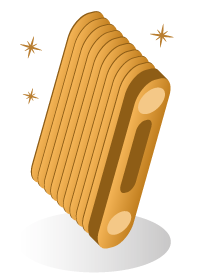
If your radiators are making strange noises (particularly gurgling), or the top half of any of them is cooler than the bottom part, then the time to bleed your radiators has come. You’ll need a radiator key (any DIY store will have one) and should start with the radiators closest to the boiler. Simply turn the key and listen until air stops hissing out.
Some water will spill out so you should be ready with a bowl or bucket to catch drips, and quickly turn the key the other way. After bleeding your radiators always check the pressure on your boiler and increase it if necessary (this varies from boiler to boiler but the minimum pressure level should be marked on the pressure gauge).
68. Stop Up Your Chimney
Your chimney can also be a source of heat loss in winter. Buy a chimney balloon to exclude drafts and stop heat escaping (but please don’t put on the fire with the balloon in place!).
69. Window Seals
Check window seals for any drafts (you can do this using a lit candle), and adjust, replace, or add insulation tape as necessary.
70. It's Curtains for You
Long curtains that artfully fall to the floor are all the rage, but don’t have them hanging over your radiators or you’ll be funnelling heat out the window. For radiators under windows, while maybe not as aesthetically pleasing to some, shorter curtains are much more practical.
71. Turn Off the Heating
If you leave your house for any extended period of time, remember to turn off the heating when you go.
72. Pipe Care
Following on for the above tip, if you’re going to be out of your house for more than a day or two during winter, don't turn your heating system off completely - instead turn your hot water and heating down to the lowest level that will still maintain your pipes ice-free.
73. Reflect Heat
Radiator reflector panels or foils are cheap and easy to install and will stop radiator heat being absorbed by your walls instead of heating up the air in the rooms they are in. It’s particularly important to install them behind radiators fixed to external walls.
74. Radiator-Drying
Try not to dry clothes on your radiators as it lowers the room temperature.
75. Free Up in Front of Your Radiators
Make sure there is enough space between the radiators and any furniture that may be in front of them, to allow convection currents to flow around the room, rather than just heating up the back of your couch.
Constant heat directed at furnishings will also fade them faster, and if you can't see your radiators, issues such as leaks could escape your attention for longer and thus cause more damage to your walls and flooring. An effective heating system like underfloor heating can help in this department.
Home Electricity Hacks

76. Turn Off the Lights
Make it a habit to turn off the lights every time you leave a room, and try to impress the routine of it upon everyone who lives in your house to save on your energy consumption.
77. Cheap Extraction
During the warmer months when your heating is not switched on, open windows in the kitchen and bathrooms to allow humidity out, instead of using the extractor fans - no energy used, no cost!
78. Minimise Heat Exiting
As in the kitchen, only leave bathroom extractor fans on long enough to clear any humidity, then switch them off to prevent more heat exiting.
79. Dim the Lights
Install dimmer switches throughout the house. They work very well in conjunction with LED bulbs and that way you can light a room as much as you need and no more, using less electricity.
80. Power Strips
Plug appliances into a power strip so you can switch them off all at once instead of having to go around unplugging them all.
81. Smarter Power Strips
Consider investing a little more in a smart power strip which will automatically shut off the current to any sockets when the connected device has gone on standby or is fully charged (in the case of mobiles or laptops for example).
82. TV Energy Savings
If you have a plasma TV, or even an older CRT telly, upgrade to an LCD or LED one - they are much more efficient.
83. Nightlights
If you’re prone to late night bathroom visits, use nightlights for the bathroom, hall and any children’s bedrooms, as they consume less electricity than keeping a light on.
84. Energy Vampires
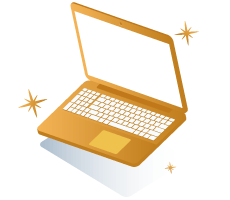
Be wary of energy vampires, they’re coming to get you! Unplug chargers, microwaves, gaming consoles, computers, tv boxes, tvs, coffee makers etc. before going to bed every night.
A study by the Natural Resources Defence Council in the USA found that energy vampires add up to $165 dollars (€145.40) on the average household bill each year.
85. Screensaver
If you won’t be using your computer for a while, consider switching it off rather than leaving it on in screensaver mode.
86. Hard-To-Reach Plugs
Anything which has an electronic display is also a significant energy vampire (your spiffy new oven for example). Consider installing radio controlled plugs or smart plugs in hard to reach spots.
87. Smartphone Smarts
Dimming your smartphone screen will mean it uses less energy and doesn’t need to be charged as often. Similarly, turning off bluetooth/wifi//4G/5G options when not needed will also keep your smartphone battery going stronger for longer.
88. Estimated Meter Readings
Don’t depend on estimated meter readings, submit them yourself and save on your energy bill! Underestimated bills could mean you're faced with a nasty surprise that you haven't budgeted for.
89. Discounts

Paperless bills and contracting energy services online will normally net you discounts of 5% to 15% off your electricity bills.
So examine your bills and make sure you are already signed up for paperless billing at least. The majority of providers offer these discounts so if yours doesn't, it may be time to switch.
90. Home Monitors
If you don’t have a smart electricity home monitor, consider investing around €40 in a wireless electricity monitor such as Minim or Owl to better see which devices are using the most electricity.
91. Solar Charging
Consider a solar charger for your mobile phone - they cost as little as €25.
92. Dusk
Hold off on switching the lights on in your house as long as possible, until dusk falls.
93. LEDs
Replacing your light bulbs with energy efficient light bulbs such as LEDs, can save you nearly a third on your lighting costs.

94. External Lighting
For external lighting, halogen light bulbs will use 25% less electricity than normal light bulbs.
Of course you could always skip the wired up lighting option altogether and opt for solar-powered lighting. Woodies and the Garden Shop, for example, have some very attractive pathways, walls, trees and deck lights at affordable prices which makes it easy to save money.
95. Timers
Using timers or motion detectors will also ensure that external lights are only on when they’re actually needed.
Hot Water Hacks

96. Insulate
Insulate all your hot water tanks and pipes to strip even more cash off your heating bills. Lagging jackets are the easiest way to insulate tanks and can be bought for as little as €12
97. Showers
Take showers not baths. Unless you have a power shower! Shockingly, power showers can use even more hot water than a bath. If you’re in doubt about how much hot water you use during a shower (particularly if you love long showers…) versus a bath, pop the plug in next time you shower and see how full the bath gets.
You can also turn down the pressure on your power shower and use a shower timer.
98. Shower Heads
Consider investing in a water saving shower head (prices start from €10) to shave even more money off your hot water costs.
99. Water Temperature
Turn down the thermostat on your boiler. There is no point in heating water to the point where you have to add cold water to it to avoid scalding yourself!
100. Holidays
Turn off your hot water system altogether if you are going away in the warmer months.
101. Boiler
Consider changing your boiler if you don’t have a condensing combi boiler (the most efficient ones, which only provide hot water on demand). You can also check out our article on boilers and heaters for even more information.
Find out more about our offers from energy, broadband and waste collection providers!

